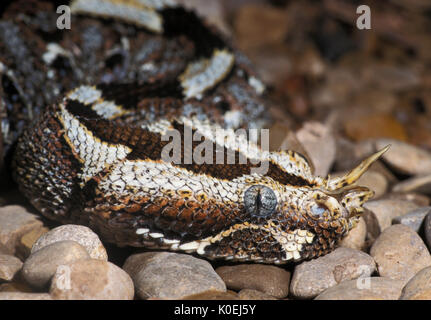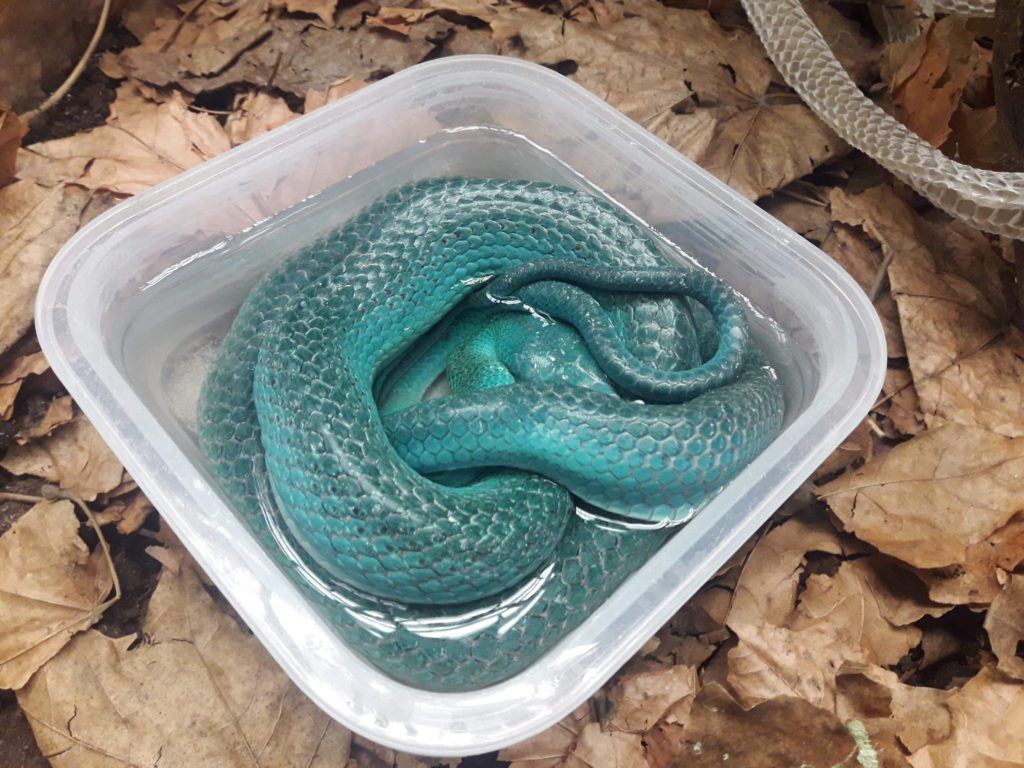


The type locality is given as " Gabon" (Africa). (2003) also list Sierra Leone, Senegal, and Liberia in West Africa. This species can be found in Guinea, Ghana, Togo, Nigeria, Cameroon, Equatorial Guinea, Gabon, the Republic of the Congo, the DR Congo, northern Angola, the Central African Republic, South Sudan, Uganda, Kenya, eastern Tanzania, Zambia, Malawi, eastern Zimbabwe, Mozambique, and northeast KwaZulu-Natal Province in South Africa. A possible Batesian mimic of the Gaboon viper has been found, which is the Congolese giant toad ( Sclerophrys channingi) this species of frog seems to resemble the viper's head, which contrasts with its darker-colored body. The iris colour is cream, yellow-white, orange, or silvery. The head is white or cream with a fine, dark central line, black spots on the rear corners, and a dark blue-black triangle behind and below each eye. The belly is pale with irregular brown or black blotches.
#Blue rhinoceros viper series
The flanks have a series of fawn or brown rhomboidal shapes, with light vertical central bars.

The pattern consists of a series of pale, subrectangular blotches running down the center of the back, interspaced with dark, yellow-edged, hourglass markings. The color pattern is striking in the open, but in nature, typically among dead leaves under trees, it provides a high degree of camouflage in a well-kept cage with a suitable base of dried leaves, overlooking several fully exposed specimens completely is easy. With 17–33 paired subcaudal scales, males have no fewer than 25, and females no more than 23. The ventral scales number 124–140, rarely more than 132 in males, rarely less than 132 in females. Midbody, the 28–46 dorsal scale rows are strongly keeled except for the outer rows on each side. The fangs may reach a length of 55 mm (2.2 in), the longest of any venomous snake. Four or five scale rows separate the suboculars and the supralabials, with 13–18 supralabials and 16–22 sublabials. The species has 12–16 interocular scales across the top of the head. The eyes are large and moveable, set well forward, and surrounded by 15–21 circumorbital scales. A pair of "horns" is present between the raised nostrils-tiny in B. The head is large and triangular, while the neck is greatly narrowed, only about one-third the width of the head. It is the heaviest venomous snake in Africa and one of the heaviest in the world along with king cobra and eastern diamondback rattlesnake. A large specimen of 1.8 m (5.9 ft) total length, caught in 1973, was found to have weighed 11.3 kg (25 lb) with an empty stomach. They acknowledge reports of specimens over 1.8 m (6 ft), or even over 2 m (6.5 ft) in total length, but claim no evidence supports this. (2004) give a total length of 80–130 cm (32.0 to 51.5 in), with a maximum total length of 175 cm (69.3 in), saying the species may possibly grow larger still. One female measured at 174 cm (69 in) in total length, a head width of 12 cm (4.20 in), a width or circumference of 37 cm (14.65 in), and a weight of 8.5 kg (19 lb). Adults, especially females, are very heavy and stout. The sexes may be distinguished by the length of the tail in relation to the total length of the body: around 12% for males and 6% for females. Description Īdults are typically 125–155 cm (4 to 5 ft) in total length (body and tail) with a maximum total length of 205 cm (81 in) for a specimen collected in Sierra Leone. As of 1909, Gaboon referred to the northern portion of French Congo, south of the equator and lying between the Atlantic Ocean and 12☎ longitude. Originally a name given by the Portuguese, Gabon ( Gabão) refers to the estuary on which the town of Libreville was built, in Gabon, and to a narrow strip of territory on either bank of this arm of the sea. The snake's common names include Gaboon viper, butterfly adder, forest puff adder, whisper, swampjack, and Gaboon adder. Consequently, they regard the western form as a separate species, B. According to their research, these two subspecies are as genetically different from each other as they are from B. (1999) discovered genetic differences between the two conventionally recognized subspecies of B. The Gaboon viper was described in 1854 as Echidna gabonica. It is the largest member of the genus Bitis, and it has the longest fangs of any venomous snake – up to 2 inches (5 cm) in length – and the highest venom yield of any snake. The Gaboon viper ( Bitis gabonica), also called the Gaboon adder, is a highly venomous viper species found in the rainforests and savannas of sub-Saharan Africa.


 0 kommentar(er)
0 kommentar(er)
